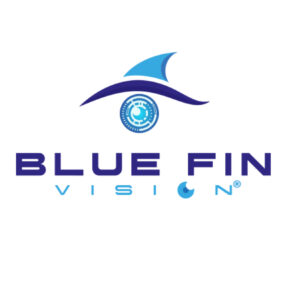Laser eye surgery is continually evolving, and its future looks even more promising as new technologies emerge. The potential for advancements in the field has led to more precise treatments, faster recovery times, and a wider range of eligible patients. One exciting development is the growing use of femtosecond lasers in surgical procedures. These lasers are incredibly precise and can be used to perform intricate steps of the surgery, such as creating the corneal flap in LASIK, which previously required a mechanical blade. This innovation makes the procedure even safer and allows for greater accuracy, reducing the risk of complications and enhancing patient outcomes.
Moreover, customized wavefront-guided LASIK has also gained traction in recent years. Traditional LASIK treatments were based on standard measurements of the eye, but wavefront technology takes it a step further by mapping the entire visual system, measuring imperfections in the eye with extraordinary precision. This results in more tailored surgery that can correct not only the basic refractive error (nearsightedness, farsightedness, or astigmatism) but also higher-order aberrations, which are imperfections that can affect contrast sensitivity, night vision, and visual clarity. Patients who undergo this type of personalized treatment often experience better overall visual quality, even in challenging conditions like low light.
Another area of development is SMILE (Small Incision Lenticule Extraction), a newer, less invasive procedure. SMILE differs from LASIK in that it does not require the creation of a corneal flap. Instead, a laser is used to create a small, lens-shaped piece of tissue within the cornea, which is then removed through a tiny incision. This method can offer a faster recovery time and may be a better option for individuals with thinner corneas, who may not be ideal candidates for traditional LASIK surgery. Additionally, because the incision is smaller and the corneal structure is left more intact, there is less potential for complications or dry eye after surgery. As the technique continues to improve and become more widely available, SMILE may become an increasingly popular choice for patients looking for vision correction.
As for the future of presbyopia, a condition that affects many people over the age of 40, researchers are exploring ways to treat this age-related vision impairment with laser technology. Currently, presbyopia is typically addressed with reading glasses or bifocals, but laser eye surgery may one day offer a permanent solution. Laser procedures such as presbyopia-correcting LASIK and corneal inlays could help address the loss of near vision by reshaping the cornea to improve close-up focus. Although this is still in the research phase, the ability to treat presbyopia with laser eye surgery could significantly impact the aging population, offering a more convenient and effective solution than the current reliance on reading glasses.
In terms of patient care and comfort, laser eye surgery is becoming more accommodating to diverse patient needs. The development of more refined preoperative assessments has made it easier to identify ideal candidates for the procedure, ensuring that each patient receives the most appropriate treatment for their specific condition. For example, individuals with conditions like dry eye syndrome, which was once a contraindication for LASIK surgery, can now undergo treatments to manage this condition before the procedure. This has expanded the pool of eligible patients and improved overall satisfaction with the results.

Additionally, postoperative care is becoming Laser eye surgery more streamlined, with many patients now experiencing minimal discomfort following surgery. With the advent of newer, gentler techniques and advances in wound healing, recovery times have shortened, and side effects such as dryness, glare, or halos are becoming less common. Most patients are able to return to normal activities within a day or two, and the majority report an improvement in their vision almost immediately after the surgery.
The affordability of laser eye surgery is also improving, as competition among clinics has driven prices down, while financing options make the procedure accessible to more individuals. In many cases, the long-term savings outweigh the upfront cost of surgery, particularly when factoring in the ongoing expenses associated with glasses and contacts. Over time, patients save money on prescription eyewear, contact lenses, and the costs associated with maintaining those products. As the technology becomes more widespread and efficient, it’s likely that laser eye surgery will continue to become an even more cost-effective solution.
For individuals in developing countries, global outreach programs are working to make laser eye surgery more accessible. Many nonprofit organizations and international medical missions focus on providing vision correction to underserved populations who might not have the means to afford such treatments otherwise. These initiatives are expanding the reach of laser eye surgery to regions where the need is greatest, offering life-changing benefits to people who might otherwise suffer from poor vision and its associated challenges.
As laser technology improves, we can also expect the development of newer methods that combine laser surgery with regenerative treatments. In the future, there may be treatments that go beyond vision correction, incorporating techniques to promote the repair and regeneration of corneal tissues, possibly even reversing some forms of vision impairment. Such innovations could drastically change the way we view the potential of laser surgery and its ability to treat a wide variety of visual conditions.
In summary, laser eye surgery continues to advance in both technology and accessibility, offering patients a chance to experience a life free from corrective lenses. From customized treatments that correct complex vision problems to the rise of minimally invasive procedures like SMILE, the field of laser eye surgery has never been more promising. With ongoing research into treatments for presbyopia, improved techniques for preoperative assessments, and an increasing number of financing options, laser eye surgery remains one of the most transformative medical procedures available today. Looking to the future, the possibilities for even more precise, effective, and affordable vision correction are truly exciting.